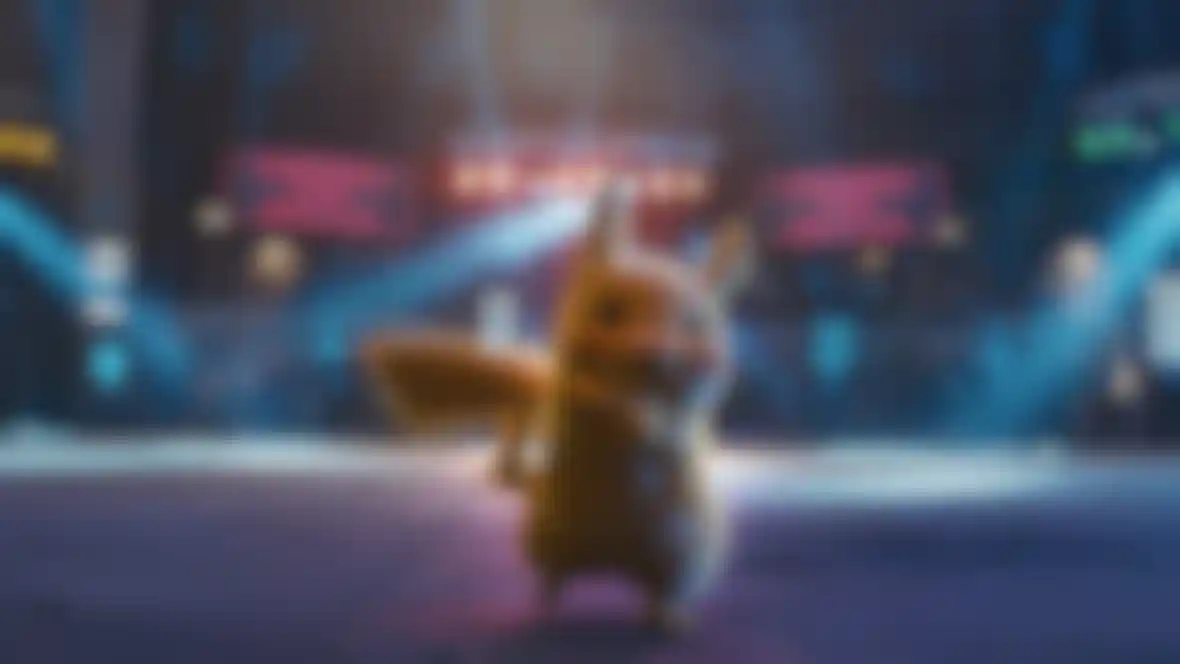
Behind-the-Scenes of Pokmon Detective Pikachu Territory Studio on creating screen graphics and FUI for Warner Bros.' trip to Ryme City.
On most levels, attempts to describe the plot of Pokmon Detective Pikachu the first, live-action Pokmon film, are doomed to failure. You just have to accept that you've got Ryan Reynolds in the form of the deerstalker-hat-wearing Pikachu, who happens to be a great detective who can talk to only one human. And that human is Tim Goodman (Justice Smith), a 21-year-old insurance salesman who has recently lost his father in a car crash in Ryme City, a place where humans and Pokmon live together peacefully.
That's important to remember because the world of Pokmon (trading cars, comics, video games, films) involves catching, training and fighting these bizarre creatures. Which brings us to Territory Studios, the go-to studio for custom user interfaces and sci-fi neon goodness for futuristic films, like Ghost in the Shell and Guardians of the Galaxy.
Territory's Ry Close was the creative lead and art director for Pokmon Detective Pikachu, and his small team primarily used Cinema 4D and After Effects to work on all of the film's sets, particularly screen graphics for Rhyme City. Watch Territory's UI here.
Creating PCL Lab UI
While the initial wave of Pokmon popularity was before Ry's time, he understands that, "Some of the guys in the studio were clearly huge fans of the game with knowledge of which Pokmon does what, and that connection made it more fun to work on."
The first main set the team tackled was the PCL lab in Ryme City, a secret place where scientist, Doctor Ann Laurent, was doing genetic research on Pokmon to enhance their fighting abilities. UK-based MPC (Moving Picture Company) supplied the 3D files for three of the Pokmon characters: Greninja, Tortorella and Mewtwo. Territory's team used Cinema 4D to enhance all three characters though, ultimately, Mewtwo was the only character brought into the FUI to tie into a story beat. Watch the animated PCL Lab FUI here.
Those static assets were ideal for use on the lab analysis screens. "The screens represent vital stats of the process of enhancing characters, as well as some controls that alter the lighting, temperature and humidity of the enclosures," Close explains. For clarity, Territory created two different types of screens, one showing normal conditions and another for emergencies that flashed red alert signs.
Other interfaces seen throughout the lab visualized biometric analysis, DNA spirals of the Pokmon, medical technology and database systems. Animated FUI can be seen here. To get the right look, Close's team used Illustrator for concepting and design and After Effects for compositing. The Real Glow plug-in helped them get better neon effects by optically correcting light falloff for a more nuanced and realistic feel.
Designing Battle Graphics
Another major scene Territory worked on was the Pokmon Roundhouse Battle Ring, an illegal, underground fight club. Shot at the actual London Roundhouse, the footage was enhanced with low-tech CG meant to "look like someone programmed them in their bedroom the night before," Close explains. In addition to creating graphics for the giant wall screens featuring the scoreboard, announcements, commentators' animated play-by-play as well as replays, Territory also designed smaller FUI, including screens for door iPads, panels and walls.
To give some of the displays a deliberately retro vibe, Territory sometimes added a DOS-style boot-up to the intro screen. The main font was chosen by the client, and the team used flickering colors and frame rates to complete the look and feel. In all, Close created over 60 different battle screens for use as playback on set, one for every move the fighting Pokmon made, allowing for every contingency and maximum VFX flexibility.
Bringing Ryme City to Life
Territory also created a vast number of additional screen graphics and FUI to help bring Ryme City to life, including LED advertising, various signs, interactive panels, laptop screens for the police station and more. To maintain a consistent look and feel, Close and his team collaborated closely with the art department working on the film.

Close and his team enjoyed working on Pokmon Detective Pikachu, which was a departure from the more serious sci-fi and military-ops fare they tackle. But the project was not without its hurdles: "This type of project is a good example of the challenges you face when you're working on set to get screens into live shots," he explains.
While it's exciting and energizing to have interesting characters and sets, as well as a good story to tie into, the team worked long hours, including a lot of early mornings, to create graphics behind the scenes as the film was being shot. "The deadlines were sometimes a matter of minutes while the set was being set up for another shoot," Close adds. "I had to work fast on set to make small directional changes to get everything rendered and over to playback for fast turnaround between shoots. But it was a great challenge to create some designs that were more fun and playful."
CREDITS:
Art department
Production Designer: Nigel Phelps
Supervising Art Director: Ben Collins
Territory
Creative Director: Andrew Popplestone
Creative Lead: Ryan Close
Distributed by Warner Bros.
References: Concept art, 3D models and typography by MPC







